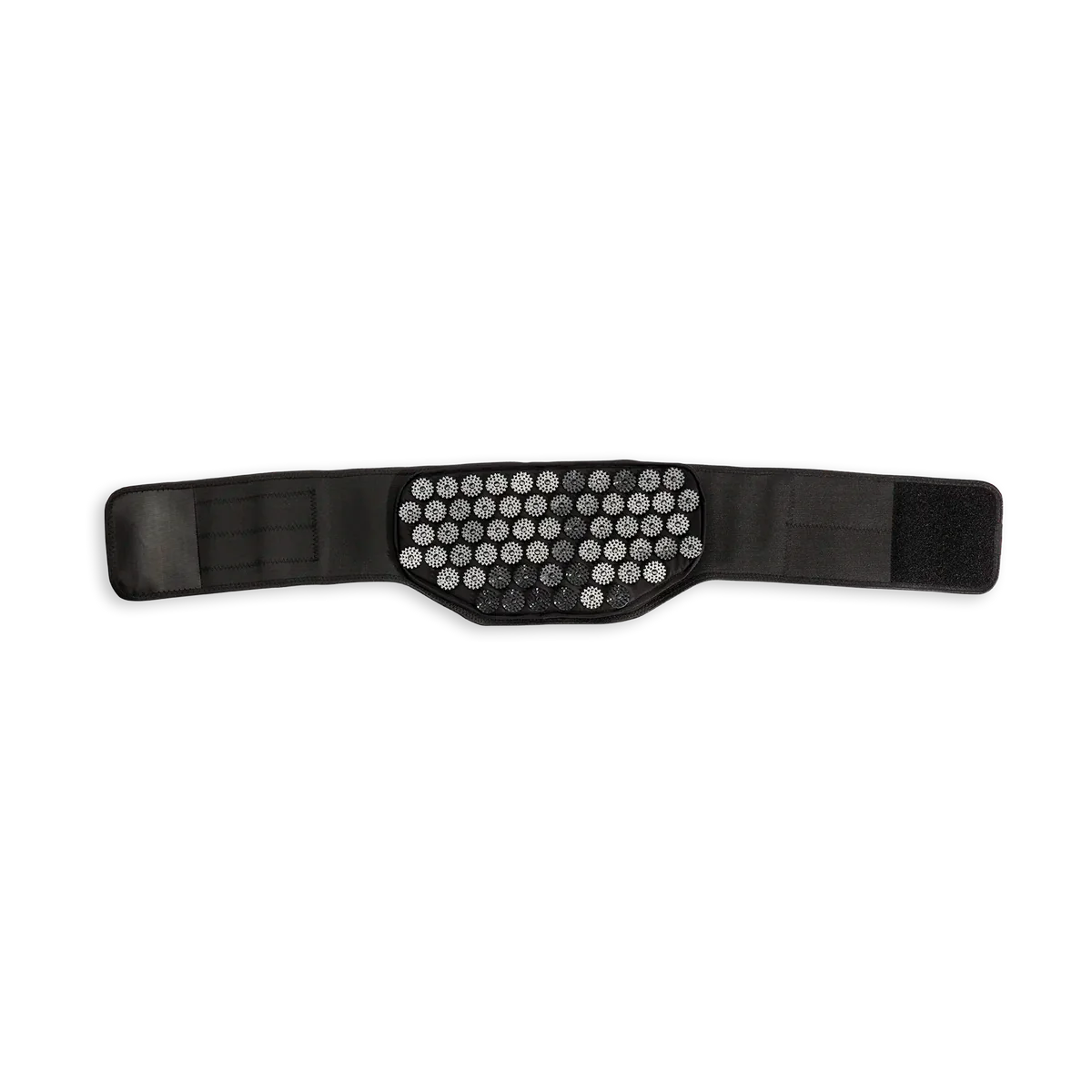Do you sometimes feel tingling, numbness or pain in your foot, more specifically in the area of the ankle joint and the sole of the foot? This could indicate tarsal tunnel syndrome. Similar to carpal tunnel syndrome in the wrist, this condition affects the ankle and occurs when the tibial nerve (nervus tibialis) is constricted or irritated in the tarsal tunnel. This can be triggered by various causes, such as injury or inflammation. As these complaints affect your mobility and quality of life, you should definitely take them seriously. Together we can do something about it. We are happy to provide you with detailed information about tarsal tunnel syndrome and show you possible treatments in the following article.
Content
1. brief information on the tibial nerve
2. tarsal tunnel syndrome: interpreting symptoms correctly
3. tarsal tunnel syndrome: causes & risk factors
4. the following tarsal tunnel syndrome treatment is possible
5. these tarsal tunnel syndrome exercises can help you
6 When is tarsal tunnel syndrome surgery unavoidable?
Brief information on the tibial nerve
The tibial nerve (nervus tibialis) is an important nerve that is located in the lower leg and is responsible for the movement and sensitivity of your foot. It runs along the inside of your leg through the tarsal tunnel in the ankle area and supplies various muscles and tissues in the foot and lower leg, enabling movements such as lifting the foot or stretching the toes. In addition, the tibial nerve transmits sensory signals from the foot back to the brain, which ensures sensation and touch in the foot. In short, the tibial nerve plays a crucial role in coordinating movement in the foot.

Tarsal tunnel syndrome: interpreting symptoms correctly
If the tibial nerve in the tarsal tunnel is impaired, this can lead to symptoms such as tingling, numbness, a burning sensation or real pain in the joint or even the entire foot, particularly in the area of the inner ankle and sole of the foot. When walking or standing, these sensations can become more pronounced and radiate to the toes. You may have the feeling that your feet often fall asleep. Or you may have difficulty moving or controlling them. These symptoms of tarsal tunnel syndrome can affect your everyday life, for example when exercising, running or simply sitting down. It is therefore important to take them seriously. You can counteract them with appropriate treatment, such as suitable exercises. However, if the pain persists, you should always seek medical advice. Your doctor can carry out a thorough examination to determine whether you have the syndrome. Together you can then discuss the best treatment approaches for your individual case. They will also be able to tell you whether you have anterior or posterior tarsal tunnel syndrome. Here is some information for you to help you make an assessment:
Anterior & posterior tarsal tunnel syndrome
Anterior tarsal tunnel syndrome occurs when the tibial nerve is pinched or irritated in the anterior region of the tarsal tunnel. This can lead to symptoms such as tingling, numbness or pain in the back of the foot. In contrast, posterior tarsal tunnel syndrome occurs when the tibial nerve at the back of the tarsal tunnel is affected. The symptoms here range from pain and tingling to numbness in the sole of the foot and heel area. Both forms of the syndrome can be triggered by various causes - primarily injuries, inflammation or anatomical anomalies. We will now go into this in detail.
Tarsal tunnel syndrome: causes & risk factors
The causes of tarsal tunnel syndrome are varied. A common cause is constriction or compression of the tibial nerve in the area of the tarsal tunnel, often due to injury or inflammation. For example, repeated strain and overload from certain sports such as running or soccer can lead to this, as well as bony changes following fractures in the area of the medial malleolus, talus and calcaneus, ligament injuries to the medial ligament or internal capsular ligament apparatus and injuries to the structures in the tarsal tunnel itself. Inflammatory reactions as a result of diseases such as rheumatoid arthritis or ankle arthrosis are further triggers. Chronic diseases such as diabetes or arthritis can also increase the risk of tarsal tunnel syndrome, as they can lead to inflammation. Other factors, such as obesity, weak connective tissue or a congenital narrowing of the tarsal tunnel, can also trigger tarsal tunnel syndrome. It is therefore important to recognize and treat these causes in order to maintain your foot health in the long term.
The following tarsal tunnel syndrome treatment is possible:
Now let's move on to the treatment of tarsal tunnel syndrome. If you suffer from tarsal tunnel syndrome, there are various therapeutic approaches to alleviate your symptoms and improve your well-being. One option is conservative therapy, which is often prescribed first. Immediate treatment for tarsal tunnel syndrome is certainly immobilization. After that, recommendations range from orthopaedic shoes or insoles to physical therapy and targeted stretching and loosening exercises for the calf and foot muscles. These measures can help to reduce the pressure on the nerve, which can also alleviate the symptoms in the joint and on the sole of the foot. We will go into this in more detail in a moment.
In some cases, drug therapy can also be used to treat pain and inflammation, for example in the case of an existing inflammatory joint disease (rheumatoid arthritis). This may involve taking anti-inflammatory medication such as ibuprofen or applying topical pain ointments. People often ask whether tarsal tunnel syndrome can be taped. The answer is yes. Because this also relieves the strain on your ankle or promotes its stability. Bandages or splints can also be used for this. However, please be careful not to permanently restrict your circulation, as this would be counterproductive.
If conservative measures are not enough to alleviate your symptoms, invasive treatment may be considered. This includes, for example, injecting corticosteroids directly into the tarsal tunnel to reduce inflammation and relieve pressure on the nerve. In more severe cases, tarsal tunnel syndrome surgery may also be necessary to permanently reduce the pressure on the tibial nerve. We will go into this in more detail later. Of course, it is important to work with an orthopaedic or neurological specialist to find the best treatment option for your individual situation.
These tarsal tunnel syndrome exercises can help you:
If you suffer from tarsal tunnel syndrome, you can integrate specific exercises into your daily routine to alleviate your joint, arch and sole symptoms and improve your foot health. In addition to the classic calf muscle stretch, you can also try variations such as the lateral calf muscle stretch or the calf muscle stretch on the wall as a treatment for tarsal tunnel syndrome. And this is how it works:
- Classic calf muscle stretch: Stand upright with one foot positioned slightly forward and the other foot one step back. Keep your back straight and your heels firmly on the floor. Now slowly bend the front knee while keeping the back leg straight. Now feel the stretch in the calf of the back leg. Stay in this position for around 20-30 seconds and breathe evenly. Then change position and repeat the stretch with the other leg.
- Lateral stretch of the calf muscle: Stand up straight with your legs about shoulder-width apart. Now shift your weight onto one leg and keep the other leg straight. Then slowly bend your upper body to the side by pushing your hips to the opposite side. Then stretch the arm on the same side as the bent leg over your head while you feel the stretch. Hold this position for around 20-30 seconds and then switch sides.
- Calf muscle stretch on the wall: Position yourself about an arm's distance away from a wall. Stretch one leg back and lean against the wall with your hands. Keep your back leg straight and your heel firmly on the floor. Now slowly lean forward with your upper body until you feel a stretch in your calf. After around 20-30 seconds, you can switch sides here too.
These three exercises not only promote blood circulation and reduce pressure on the tibial nerve, but can also help to improve the overall flexibility and mobility of your calf muscles.
Further exercises & acupressure
Another effective exercise for relieving the symptoms of tarsal tunnel syndrome is foot rolling with a massage ball. In addition to straight rolling over the back of the foot and the sole of the foot, you can also use circular movements to provide relief or press on specific painful points. This treatment releases tension and loosens your muscles, which not only relieves pain in the foot and numbness, but also strengthens the foot muscles as a whole and improves mobility. Our tip: self-massage of the sole of the foot is even easier with an acupressure foot mat. Simply stand on the numerous spikes and let the mat "work" for you. By shifting your weight, you can control the area of the sole of your foot where you want to apply more or less pressure. Do you like this kind of relaxation? Then treat your whole body to a session on an acupressure mat. This will improve your circulation and relax your muscles after a hard day.
In addition to stretching exercises and self-massage, you can also integrate balance exercises into your daily routine to counteract your tarsal tunnel syndrome. Try standing on one leg more often, for example while brushing your teeth or doing the washing up. You can also stand on a wobbly surface such as a balance cushion or foam pad to stimulate your foot muscles and improve your stability. In addition, these exercises also help to reduce the risk of injury and promote overall foot health. Important: Exercise regularly to achieve long-term improvement in your tarsal tunnel syndrome. By integrating the exercises into your daily routine, you can actively help to alleviate your symptoms. If you are unsure which exercises are suitable for you, a physiotherapist can put together an individual exercise plan for you.

When is tarsal tunnel syndrome surgery unavoidable?
As soon as your symptoms are not sufficiently alleviated by conservative treatment methods within an acceptable period of time and your tarsal tunnel syndrome continues to affect you severely, surgery may be considered. This usually happens when the pressure on the tibial nerve is so severe that your quality of life is extremely impaired and you can hardly perform daily activities.
During the operation, the tarsal tunnel is widened to reduce the pressure on the nerve. This is done by removing tissue or bone to create more space for the nerve. In some cases, it may also be necessary to realign the surrounding structures to permanently reduce the pressure. The operation is usually performed under local or general anesthesia and can be performed on an outpatient or inpatient basis, depending on the individual situation. Most patients notice a significant improvement in their symptoms after the procedure, but must undergo a natural rehabilitation phase. This involves strengthening the foot muscles and restoring mobility. Your doctor will give you specific instructions for aftercare, which is why we do not want to go into detail about this period here.
We hope that your symptoms are not yet so extensive and severe. Because in this case, you can first exhaust all the possibilities of conservative therapy before you have to think about surgery. The fact is: surgery on the tarsal tunnel should only really be considered if conservative treatment methods are not sufficiently effective. Talk to your doctor about the options in your individual case to make the best decision for your health. Our tip: A second opinion certainly doesn't hurt when making such a far-reaching decision as an operation.

















